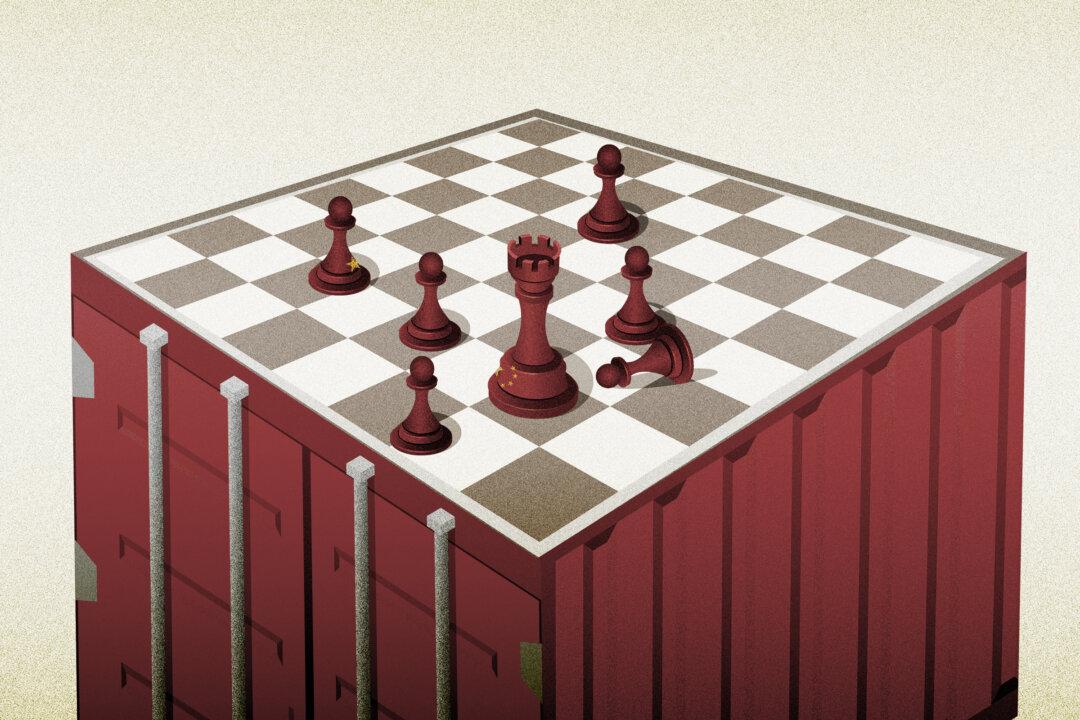WASHINGTON—President Donald Trump’s chances to win reelection in 2020 are rising as the violent demonstrations across the country are playing in his favor, according to JPMorgan Chase & Co., which also reports the economy is making a “K-shaped” recovery.
“Investors should position for rising odds of Trump re-election,” Marko Kolanovic, head of the global macro quantitative and derivatives strategy team at JPMorgan, wrote in a recent report.
The latest polls show that Trump has been narrowing the gap in recent weeks, and there are two factors driving the shift, Kolanovic says.
The first effect is “the impact of the degree of violence in protests on public opinion and voting patterns.”
Wasow studied U.S. election results between 1960 and 1972 and found that peaceful pro-Democrat demonstrations helped Democrats while violent pro-Democrat demonstrations helped Republicans. He also concluded that demonstrations directly resulted in the election of Republican Richard Nixon in 1968.
JPMorgan analysts applied Wasow’s work to the current situation of protests and found that there could be a nearly “5-10 point poll shift from Democrats to Republicans if the perception of protests turns from peaceful to violent.”
However, there is an important difference between the 1960s and current events, as social media plays a significant role in shaping public perception.
“Voters can see for themselves if the protests are peaceful or violent,” Kolanovic wrote. “It is highly likely that social media distribution of videos of looting in Chicago, L.A., and NYC, arson in Minneapolis, Wisconsin, Portland, Seattle, etc., have led to a significant shift in election odds in favor of Republicans.”
Kolanovic notes that social media has amplified the message, and hence the effect on public opinion could be bigger this time compared to the 1960s. That’s already been manifested by recent reactions such as record purchases of firearms and migration from cities such as New York.
Both presidential candidates have cast blame on the other for promoting violence.
Trump on Sept. 1 visited Kenosha, a city in Wisconsin affected by the riots last week. During his visit, he criticized “far-left politicians” for pushing “the destructive message that our nation and our law enforcement are oppressive or racist.”
He also accused the media of “fueling” the violence across the country.
Democratic presidential nominee Joe Biden earlier accused Trump of “fanning the flames of hate and division in our society” and “recklessly encouraging violence.”
Since June, Biden’s lead over Trump among voters has significantly narrowed, according to CNN and Emerson College polls.
Emerson showed that Trump tightened the presidential race to a two-point margin in August.
“We believe that momentum related to the Wasow effect will continue in favor of Trump, unless Democrats pivot away from their stance regarding demonstrations,” Kolanovic stated.
“This may not be easy, however, given that top Democrats have called for daily demonstrations (e.g., Kamala Harris) and rallied their base around the theme of defunding police.”
There is also a discrepancy between the polls and actual probabilities, as voters are afraid of reprisal. Kolanovic says that could artificially skew polls in favor of Biden.
“It should not come as a surprise that this effect appears to be stronger for Republican voters given the liberal trend of ‘cancel culture.’”
K-Shaped Recovery
Investors and economists have been debating the shape of the economic recovery for months, and they’ve labeled their expectations for a rebound with letters, such as V, W, or U.However, JPMorgan economists are seeing a “K-shaped” recovery, because of large gaps in the performance of different sectors of the economy.
The recent stock market rally benefited the technology sector the most, which rose to nearly 20 percent above previous all-time highs, according to JPMorgan. Meanwhile, other sectors of the economy such as airlines, energy, shopping malls, offices, and hospitality nosedived.
The recovery has also created enormous inequality in society, with low-wage workers and minorities taking a big hit.
“On one side, tech fortunes reached all-time highs, while lower-income, blue-collar workers and those that cannot work remotely suffered the most,” Kolanovic said.





